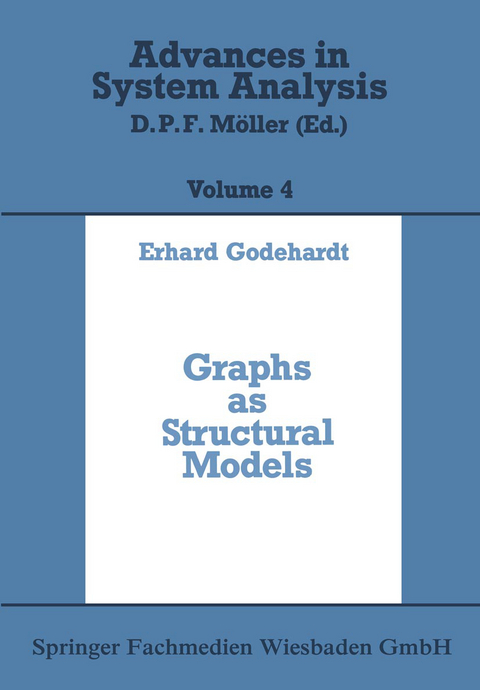Graphs as Structural Models
Vieweg & Teubner (Verlag)
978-3-528-06312-2 (ISBN)
0 Mathematical Symbols and Notation.- 1 Introduction, Basic Concepts.- 1.1 Modelling in Medicine and Biology.- 1.2 Graphs as Tools in Mathematical Modelling.- 1.3 The Scope of Exploratory Data Analysis.- 1.4 The Basic Concepts of Cluster Analysis.- 2 Current Methods of Cluster Analysis: An Overview.- 2.1 The Aim of Cluster Analysis.- 2.2 The Different Steps of a Cluster Analysis.- 2.3 A Short Review of Classification Methods.- 2.4 Preparation and Presentation of Results.- 3 Graph-theoretic Methods of Cluster Analysis.- 3.1 Classification by Graphs.- 3.2 Classifications by Multigraphs.- 3.3 An Algorithm for the Construction of (% MathType!MTEF!2!1!+-% feaagCart1ev2aaatCvAUfeBSjuyZL2yd9gzLbvyNv2CaerbuLwBLn% hiov2DGi1BTfMBaeXatLxBI9gBaerbd9wDYLwzYbItLDharqqtubsr% 4rNCHbGeaGqiVu0Je9sqqrpepC0xbbL8F4rqqrFfpeea0xe9Lq-Jc9% vqaqpepm0xbba9pwe9Q8fs0-yqaqpepae9pg0FirpepeKkFr0xfr-x% fr-xb9adbaqaaeGaciGaaiaabeqaamaabaabaaGcbaaeaaaaaaaaa8% qacaWGRbGaaiilaiqadsgagaWca8aadaahaaWcbeqaa8qacaWGubaa% aOGaai4oaiaadohaaaa!3B95!$$k,{vec d^T};s$$)-Clusters.- 3.4 The Construction of Dendrograms of (k; s)-Clusters.- 4 Probability Models of Classification.- 4.1. Current Probability Models in Cluster Analysis.- 4.2. Graph-Theoretic Models of Classification.- 4.3. Discussion of the Graph-Theoretic Probability Models.- 5 Probability Theory of Completely Labelled Random Multigraphs.- 5.1 Definitions and Notation.- 5.2 A Probability Model of Random Multigraphs.- 5.3 Some Results for Random Graphs ?nN and Gnp.- 5.4 Limit Theorems for Random Multigraphs.- 5.5 Discussion of the Results.- 5.6 Hints for the Numerical Computation of the Expectations and Distributions.- 6 Classifications by Multigraphs: Three Examples from Medicine.- 6.1 Pharmacokinetics of Urapidil in Patients with Normal andImpaired Renal Function.- 6.2 Pharmacokinetics of Lidocaine in Patients with Kidney or Liver Impairments.- 6.3 Pregnancy-Induced Hypertension.
| Erscheint lt. Verlag | 1.1.1988 |
|---|---|
| Reihe/Serie | Advances in System Analysis |
| Zusatzinfo | X, 214 p. |
| Verlagsort | Wiesbaden |
| Sprache | englisch |
| Gewicht | 402 g |
| Themenwelt | Mathematik / Informatik ► Informatik ► Theorie / Studium |
| Mathematik / Informatik ► Mathematik ► Graphentheorie | |
| Schlagworte | algorithms • Calculus • Chemistry • classification • Function • Graph • Graphs • Mathematica • Modeling • Optimization • Probability Theory • Theorem • Variable |
| ISBN-10 | 3-528-06312-2 / 3528063122 |
| ISBN-13 | 978-3-528-06312-2 / 9783528063122 |
| Zustand | Neuware |
| Haben Sie eine Frage zum Produkt? |
aus dem Bereich




